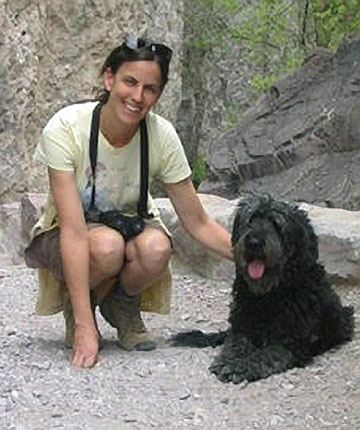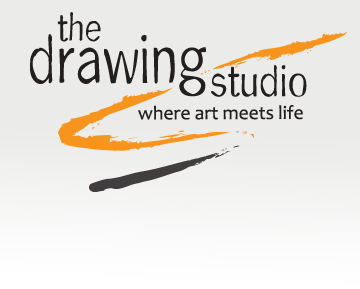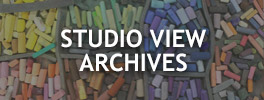 Nancy Chilton received her Bachelor of Fine Arts from the University of Arizona with an emphasis on figure drawing. She works in a variety of media, including drawing, painting, and printmaking, and has been creating art in Tucson since 1982. Her work has been shown in galleries and other venues in Tucson, Phoenix, and elsewhere. As a teaching artist and board member at The Drawing Studio, she loves to support and celebrate the creative spirit within all individuals.
Nancy Chilton received her Bachelor of Fine Arts from the University of Arizona with an emphasis on figure drawing. She works in a variety of media, including drawing, painting, and printmaking, and has been creating art in Tucson since 1982. Her work has been shown in galleries and other venues in Tucson, Phoenix, and elsewhere. As a teaching artist and board member at The Drawing Studio, she loves to support and celebrate the creative spirit within all individuals.
A little bit from Nancy:
How did you find out about The Drawing Studio?
In 1992 I lived in a duplex on South 5th Avenue in Armory Park. The Drawing Studio was a block away, in a little corner building. I think that was their first public space. I would stroll down there for Open Studio figure drawing. Over the years, off and on, I’ve attended classes, returned to Open Studio, volunteered, been on the staff, and now I’m teaching. I’m grateful that The Drawing Studio has always been there and that I’ve been able to participate in so many ways!
Why is art important to you in your life?
As early as I remember, I drew pictures and made things, I wrote poems and plays and stories. I had an active imagination, and I loved being out in nature. School was inhibiting. There wasn’t much space for creativity, no real art curriculum. Learning in that environment was an intense struggle for me. I was in a distracted state much of the time and stared out the window a lot. Back then, that wasn’t seen as a good thing. It wasn’t until much later in life that I realized how important art is for me as a way to understand and be in the world. This becomes even more apparent as I get older.
My mom enjoyed drawing and painting (and still does). Like so many people, she had difficulty making time for art, but the interest was there. Living in a suburb of DC, we visited galleries and museums pretty frequently. We had access to different kinds of cultural experiences. My dad was an avid gardener, and we camped a lot. Watching storms, watching plants grow, observing wildlife. Being curious and compassionate. All of that is in me and feeds an impulse to observe and create.
Why are you teaching at The Drawing Studio?
Being a teaching artist keeps me honest. It gets me back to home base, reminds me to slow down and be present. When I encourage others to explore, discover, make mistakes, and try again, I can’t help but internalize that permission for myself.
The Drawing Studio is a wonderful place to learn and teach and work and play. It’s such an inclusive and collaborative community. All kinds of people walk through its doors. I feel like I’m part of something vital and important.
What is your favorite medium? To teach? To make your own art?
If I had to pick just one medium, it would be drawing. What a relief that all mediums extend from that! But seriously, I do love to draw. The sensation of pencil, charcoal, or ink on paper. I love paper. Just touching it. Okay: I’m starting to salivate. But really, it’s hard to put into words.
A drawing can be very raw, or highly refined, and in either case it’s mark-making at its most immediate and direct. There’s a sense of touch: the paper, the line, the tracing of things observed from life or in the mind. Gestural marks simultaneously convey something that just happened and something that hasn’t happened yet (but it’s going to happen!). I think that’s why I often gravitate toward the drawings of other artists, including the old masters. I definitely love painting: lush colors, richly textured surfaces. But a drawing resonates in a particular way that I respond to.
Drawing is a democratic medium: affordable and portable. You don’t need to know anything special in order to begin. I love that Drawing Fundamentals is available to everyone: beginners, experienced artists, old, young. The students inspire me with their courage and focus, and how they support one another. It’s incredible to literally SEE how much they learn, and see them witnessing their own progress. I learn so much from their experience and wisdom, their inventiveness.
I started figure drawing when I was a teenager. I think it opened my way back into art. Figure drawing is an interesting way of relating to another person—that’s part of it. Experiencing your own humanity as you observe another human. And being responsive in the moment. Anything that’s alive is going to move, eventually! I taught expressive figure drawing for the first time this last spring, with a lot of emphasis on gesture and response. The energy of the class was so dynamic and engaged, even the models were very involved—it felt collaborative. I can’t wait to teach it again!
Who is your favorite artist?
Impossible to answer. There are infinite possibilities for artistic expression. There’s so much to celebrate, and nowadays there’s so much to reject, or select, or transcend. What we call “Western Art” is vast, and yet it’s only a thin slice of human creative experience.
That said: Lately I’ve been looking at and reading about the work of 2 artists: William Kentridge and Agnes Martin. They’re very different from each other, in obvious ways. Kentridge’s art is figural, and very theatrical. Much of his work critiques the injustices of apartheid and colonialism (he’s a white South African). He’s really into drawing. He animates his drawings by photographing them at multiple stages along the process. He often uses charcoal, so you see the erasures and smudges and imagery appearing and dissolving and so on, it all comes and goes and evolves. This dynamic becomes an integral part of the subject matter. Kentridge is so intensely productive and process-oriented that you don’t really point to one piece and say “…THAT Kentridge..”
Agnes Martin’s concerns are almost diametrically opposite to Kentridge’s. Her work is abstract and minimal, quiet and repetitive. Deeply personal and also detached. Martin wanted her work to live outside of history and to express experience beyond the material world. Her thinking was steeped in transcendentalism, Calvinism, and Taoism. She didn’t even want her mature work to be seen in the context of her own development as an artist, so she destroyed or hid a lot of her earlier pieces.
My attraction to the art of William Kentridge is probably more obvious than what I respond to in Agnes Martin. What I do know is that when I look at her work, especially in person, I feel both calm and energized. Maybe the lesson for me is about attending to silence, allowing actions to generate from emptiness, knowing that I don’t have to rush in and fill up space.
What do you like to do in your spare time besides create art?
I’ve been a wildlife rehab volunteer for 8 years. I’m there several hours a week. It’s incredibly rewarding. In addition to helping care for and feed wild animals who are injured, sick, or orphaned, I coordinate our center’s public programs. We take our education birds—a harris’ hawk and a great horned owl—to schools, special events, and other venues—even art classes!
I just started getting involved with Owl & Panther. This organization provides mentors for refugee children and their families. Creative expression is used as a means to help individuals cope with displacement and heal from trauma. I’m not in with both feet yet, but looking forward to participating more in the near future.
I swim a lot. I hike and backpack with my lovely husband, Greg, and my wonderful dog, Zia. We also have 4 cats who provide constant entertainment. I read a lot. And I still stare out the window.
Who is your favorite fictional character & why?
Moomintroll, because he’s vulnerable and adventurous and looks like a hippopotamus.


